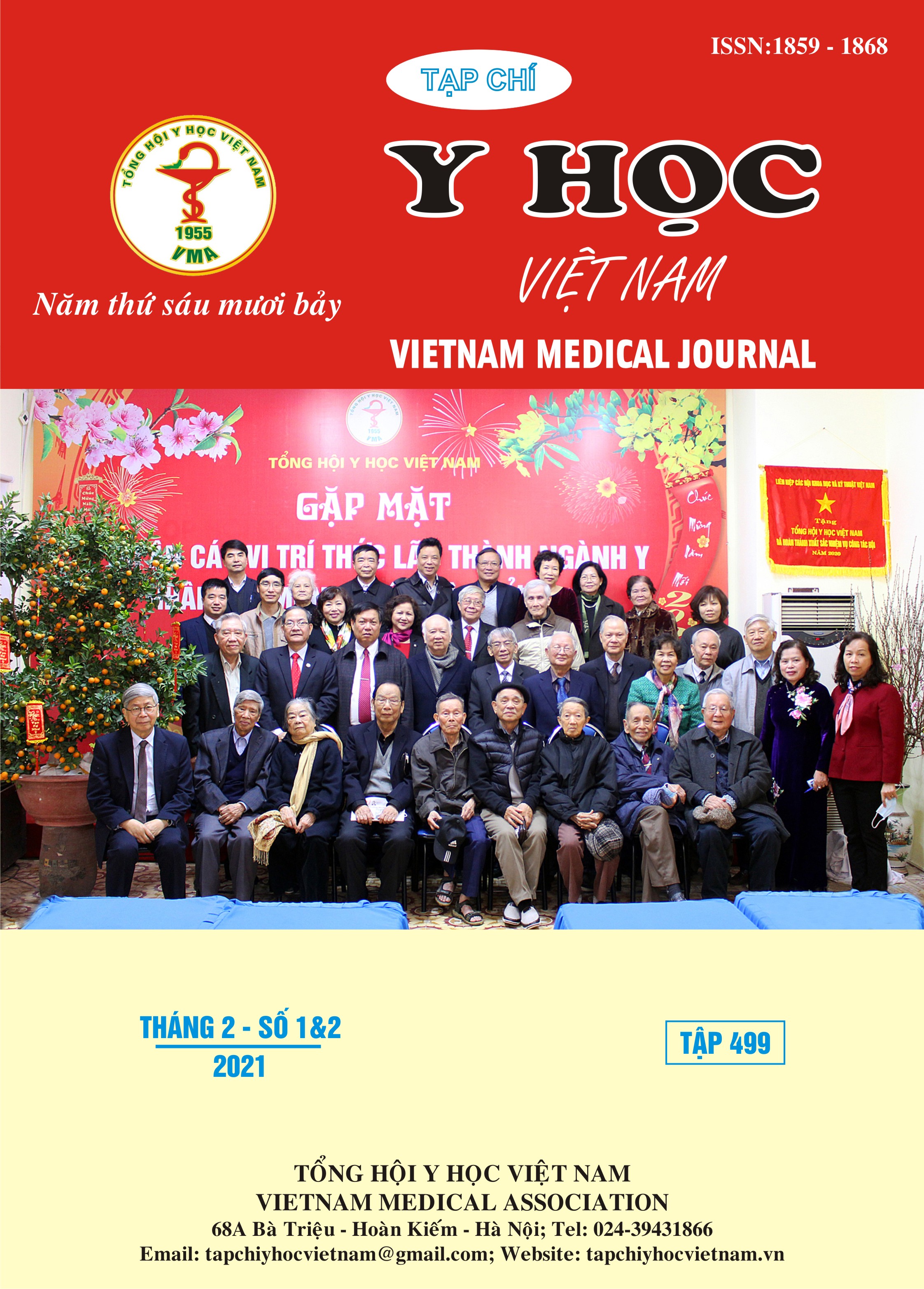EFFET OF ELECTRIC ACUPUNTURE COMBINED WITH BOBATH PRACTICE IN MOTOR REHABILITATION THE REHABILITATION THERAPY IN PATIENTS WITH HEMIPLEGIA FOLLOWING AN ACUTE CEREBRAL INFARCTION STOKE
Main Article Content
Abstract
Objective: To evaluate the effect of electric acupuncturecombined with Bobath practice in motor rehabilitation therapy in patients with hemiplegia following an acute cerebral infarction stroke. Subjects and Methods: 60 patients, being diagnosed with motor paralysis due to cerebral infarction stroke after the acute period, regardless of gender, volunteered to participate in the study. The control group was treated with electric acupuncture, the research group was treated the same but addedthe Bobath exercise method. Evaluation of change in degree of paralysis on Henry scale, clinical status and ability to function independently after 28 days of treatment. Results: The rate of patients who converted 2 degrees according to Henry in the research group was 46.67%; The mean Orgogozo score in research group increased from 56.67 ± 12.50 before treatment to 85.67 ± 9.54 after treatment, 50% of the patients converted 2 degrees of paralysis; The average Barthel score in research group increased from 39.30 ± 9.22 before treatment to 72.70 ± 7.27 after treatment, the number of patients who converted 2 degrees of paralysis accounted for 53.33%. Significantly higher than the control group. Conclusion: Electric acupuncture combined with Bobath practice method has the effect of restoring motor function in patients with hemiplegia after stroke after the acute period.
Article Details
Keywords
Cerebral infarction stroke, electric acupuncture, Bobath
References
2. Nguyễn Thị Ngọc Lan, Nguyễn Thị Kim Thủy (2011). Đánh giá kết quả phục hồi chức năng vận động của bệnh nhân nhồi máu não cấp bằng kỹ thuật Bobath. Tạp chí Y học thực hành, 798 (12), 100-103.
3. Bộ môn Y học cổ truyền - Trường Đại học Y Hà Nội (2005). Bài giảng Y học cổ truyền tập II, NXB Y học, Hà nội, 151-153.
4. Bộ Y tế (2013). Quyết định số 792/QĐ-BYT về việc ban hành Hướng dẫn Quy trình kỹ thuật khám bệnh, chữa bệnh chuyên ngành Châm cứu. Quy trình số 102: Điện mãng châm điều trị liệt nửa người do tai biến mạch máu não, Hà Nội.
5. Mai Duy Tôn (2014). The Lancet - Tiếp cận xử trí trong thần kinh học. Đột quỵ não, Nhà xuất bản Thế giới, 133-180.
6. Ngô Quỳnh Hoa (2013). Nghiên cứu tính an toàn và tác dụng của thuốc “Thông mạch sơ lạc hoàn” trong điều trị nhồi máu não sau giai đoạn cấp, Luận án Tiến sĩ Y học, Trường Đại học Y Hà Nội.
7. Phạm Thị Ánh Tuyết (2013). Đánh giá hiệu quả điều trị của phương pháp cận tam châm trên bệnh nhân liệt nửa người do nhồi máu não sau giai đoạn cấp, Luận văn tốt nghiệp bác sỹ nội trú, Trường Đại học Y Hà Nội.
8. Nguyễn Tài Thu, Trần Thúy (1997). Châm cứu sau Đại học, NXB Y học, Hà Nội.


